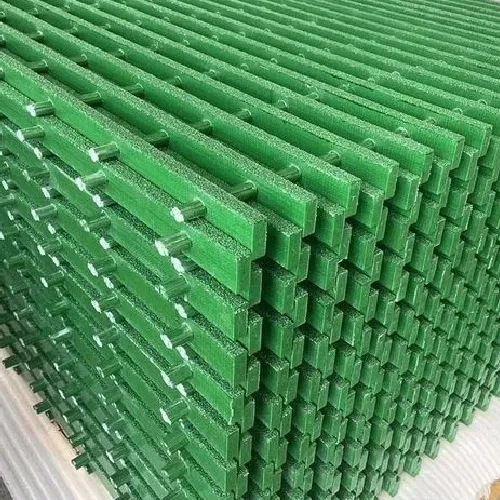loading...
- No. 9, Xingyuan South Street, Dongwaihuan Road, Zaoqiang County, Hengshui, Hebei, China
- admin@zjcomposites.com
- +86 15097380338
- Welcome to visit our website!
High-Quality FRP Angle Bar for Durable Construction Solutions
The Versatile Applications of FRP Angle Bars
In the realm of modern construction and infrastructure development, materials that offer strength, durability, and lightweight properties are increasingly sought after. One such innovative material is the Fiber Reinforced Polymer (FRP) angle bar. Combining the beneficial characteristics of both fiber reinforcement and polymer matrices, FRP angle bars have emerged as versatile components in various engineering applications.
What are FRP Angle Bars?
FRP angle bars are structural elements made from a composite material that consists of polymer resins reinforced with fibers, typically glass, carbon, or aramid. These angle bars come in an L-shaped cross-section, making them ideal for applications requiring load-bearing and support functions. They can be produced in various sizes and designs, conforming to the specific requirements of a project.
Advantages of FRP Angle Bars
One of the primary advantages of FRP angle bars is their exceptional strength-to-weight ratio. Compared to traditional materials like steel or aluminum, FRP angle bars are significantly lighter, making them easier to transport and install. Despite their reduced weight, they maintain impressive mechanical properties, allowing them to withstand significant loading conditions.
Additionally, FRP materials exhibit excellent corrosion resistance. This characteristic is particularly valuable in environments exposed to moisture, chemicals, or harsh weather conditions. Unlike steel, which can rust and degrade over time, FRP angle bars retain their structural integrity, reducing maintenance costs and extending the lifespan of structures.
Furthermore, FRP angle bars are non-magnetic and non-conductive, making them suitable for use in sensitive areas, such as electrical installations or medical facilities, where electromagnetic interference must be minimized.
frp angle bar

Applications of FRP Angle Bars
The applications of FRP angle bars are vast, ranging from construction to transportation. In the construction industry, they are often used in bridges, walkways, and platforms, where their lightweight and corrosion-resistant properties can significantly enhance structural performance. Building frameworks that require high strength without the added weight benefit tremendously from FRP angle bars.
In the transportation sector, FRP angle bars can be employed in railways, where they serve as reinforcements for rail structures and support systems. Their resistance to the harsh environmental conditions commonly found in outdoor applications further solidifies their role in ensuring safety and longevity.
Moreover, FRP angle bars are increasingly being explored for use in marine applications, such as docks and wharves. Their ability to withstand saltwater corrosion makes them an ideal choice for structures exposed to marine environments.
Future of FRP Angle Bars
As technology progresses, the demand for sustainable and high-performance materials will continue to rise. FRP angle bars, with their advantageous properties, are well-positioned to become a standard in various sectors. Ongoing research and development efforts aim to enhance the performance of these materials, addressing limitations and expanding their use in civil engineering projects.
In conclusion, FRP angle bars represent a revolutionary advancement in construction materials. Their unique combination of light weight, high strength, and durability makes them indispensable in both new construction and renovations. As industries continue to seek innovative solutions to meet modern engineering challenges, FRP angle bars will undoubtedly be at the forefront of this movement, paving the way for a more durable and efficient future.
-
GRP Structures: The Future of Lightweight, High-Performance EngineeringNewsJun.20,2025
-
FRP Water Tank: High-Performance Storage for Corrosive and Clean Water SystemsNewsJun.20,2025
-
FRP Square Tube: The New Industry Standard for Chemical and Structural ApplicationsNewsJun.20,2025
-
FRP Pultruded Profiles: The Ultimate Choice for Lightweight Structural StrengthNewsJun.20,2025
-
FRP Handrails: The Safer, Smarter, and Stronger Choice for Modern InfrastructureNewsJun.20,2025
-
FRP Grating: The Smart Solution for Durable, Lightweight Industrial FlooringNewsJun.20,2025
-
Why Choose a Galvanized Water Tank for Your Storage NeedsNewsMay.21,2025
